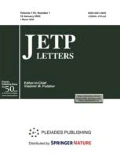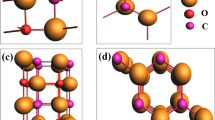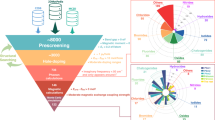To explore the diluted magnetic semiconductors for spintronic applications, we have studied N doped Y2O3 employing density functional theory (DFT). It has been observed that the non-magnetic pristine Y2O3 attains 1.0 \({{\mu }_{{\text{B}}}}\) magnetic moment for each defect for single N impurity and the induced ferromagnetic coupling range is sufficient to withstand room temperature ferromagnetism as estimated Curie temperature is 791 K. The partial density of states reveals that it is the N 2p orbital along with nearest Y 4d orbital that mainly contributes to induced magnetism. Moreover, the computed relative formation energy indicates that O substitute defect is synthetically more appreciative and dominant over interstitial defect. The charged defect analysis also predicts that the system remains ferromagnetic even with most probable charge defect state. All these supporting outcomes stipulate that N doped Y2O3 could be customized as a diluted magnetic semiconductor that could be fruitfully applied as a spintronic device.







Similar content being viewed by others
REFERENCES
T. Dietl, H. Ohno, F. Matsukura, J. Cibert, and D. Ferrand, Science (Washington, DC, U. S.) 287, 1019 (2000).
H. Y. Xu, Y. C. Liu, Y. X. Liu, C. S. Zhu, C. L. Shao, and R. Mu, Appl. Phys. Lett. 88, 242502 (2006).
J. H. Park, M. G. Kim, H. M. Jang, and S. W. Ryu, Appl. Phys. Lett. 84, 1338 (2004).
H. Pan, J. B. Yi, L. Shen, R. Q. Wu, J. H. Yang, J. Y. Lin, Y. P. Feng, J. Ding, L. H. Van, and J. H. Yin, Phys. Rev. Lett. 99, 127201 (2007).
A. M. Stoneham, A. P. Pathak, and R. H. Bartram, J. Phys. C 9, 73 (1976).
I. S. Elfimov, S. Yunoki, and G. A. Sawatzky, Phys. Rev. Lett. 89, 216403 (2002).
L. H. Ye, A. J. Freeman, and B. Delley, Phys. Rev. B 73, 033203 (2006).
K. Kenmochi, M. Seike, K. Sato, A. Yanase, and H. Katayama-Yoshida, Jpn. J. Appl. Phys. 43, L934 (2004).
Y. J. Zhao, T. Shishidou, and A. J. Freeman, Phys. Rev. Lett. 90, 047204 (2003).
H. Akai, Phys. Rev. Lett. 81, 3002 (1998).
P. M. Krstajić, F. M. Peeter, V. A. Ivanov, V. Fleuro, and K. Kikoin, Phys. Rev. B 70, 195215 (2004).
A. C. Durst, R. N. Bhatt, and P. A. Wolff, Phys. Rev. B 65, 235205 (2002).
J. B. Yi, C. C. Lim, G. Z. Xing, et al., Phys. Rev. Lett. 104, 137201 (2010).
S. Chawla, K. Jayanthi, and R. K. Kotnala, Phys. Rev. B 79, 125204 (2009).
L. X. Guan, J. G. Tao, C. H. A. Huan, J. L. Kuo, and L. Wang, J. Appl. Phys. 108, 093911 (2010).
W. Zhou, L. Liu, and P. Wu, J. Magn. Magn. Mater. 321, 3356 (2009).
B. Chakraborty and L. M. Ramaniah, J. Phys.: Condens. Matter 28, 336001 (2016).
I. S. Elfimov, A. Rusydi, S. I. Csiszar, Z. Hu, H. H. Hsieh, H. J. Lin, C. T. Chen, R. Liang, and G. A. Sawatzky, Phys. Rev. Lett. 98, 137202 (2007).
B. Chakraborty, P. K. Nandi, Y. Kawazoe, and L. M. Ramaniah, Phys. Rev. B 97, 184411 (2018).
B. A. Davis, B. Chakraborty, N. Kalarikkal, and L. M. Ramaniah, J. Magn. Magn. Mater. 502, 166503 (2020).
G. Kresse and J. Hafner, Phys. Rev. B 47, 558 (1993).
G. Kresse and J. Hafner, Phys. Rev. B 49, 14251 (1994).
G. Kresse and J. Furthmüller, Comput. Mater. Sci. 6, 15 (1996).
G. Kresse and J. Furthmüller, Phys. Rev. B 54, 11169 (1996).
J. P. Perdew, J. A. Chevary, S. H. Vosko, K. A. Jackson, M. R. Pederson, D. J. Singh, and C. Fiolhais, Phys. Rev. B 46, 6671 (1992).
G. Bouzerar, J. Kudrnovsky, L. Bergqvist, and P. Bruno, Phys. Rev. B 68, 081203 (2003).
K. Reuter and M. Scheffler, Phys. Rev. B 65, 035406 (2001).
M. Luo, Y. E. Xu, and Y. X. Song, JETP Lett. 106, 258 (2017).
M. Luo, Y. H. Shen, and T. L. Yin, JETP Lett. 104, 557 (2016).
H. Peng, H. J. Xiang, S. H. Wei, S. S. Li, J. B. Xia, and J. Li, Phys. Rev. Lett. 102, 017201 (2009).
Funding
This work was supported by the Research Center of Opto-Electrical Sensering of Shanghai University and by Gaoyuan Discipline of Shanghai-Environmental Science and Engineering.
Author information
Authors and Affiliations
Corresponding author
Rights and permissions
About this article
Cite this article
Xu, Y.E., Chu, J.H. Induction of Room Temperature Ferromagnetism in N-Doped Yttrium Oxide: Ab Initio Calculation. Jetp Lett. 113, 120–126 (2021). https://doi.org/10.1134/S002136402102003X
Received:
Revised:
Accepted:
Published:
Issue Date:
DOI: https://doi.org/10.1134/S002136402102003X




